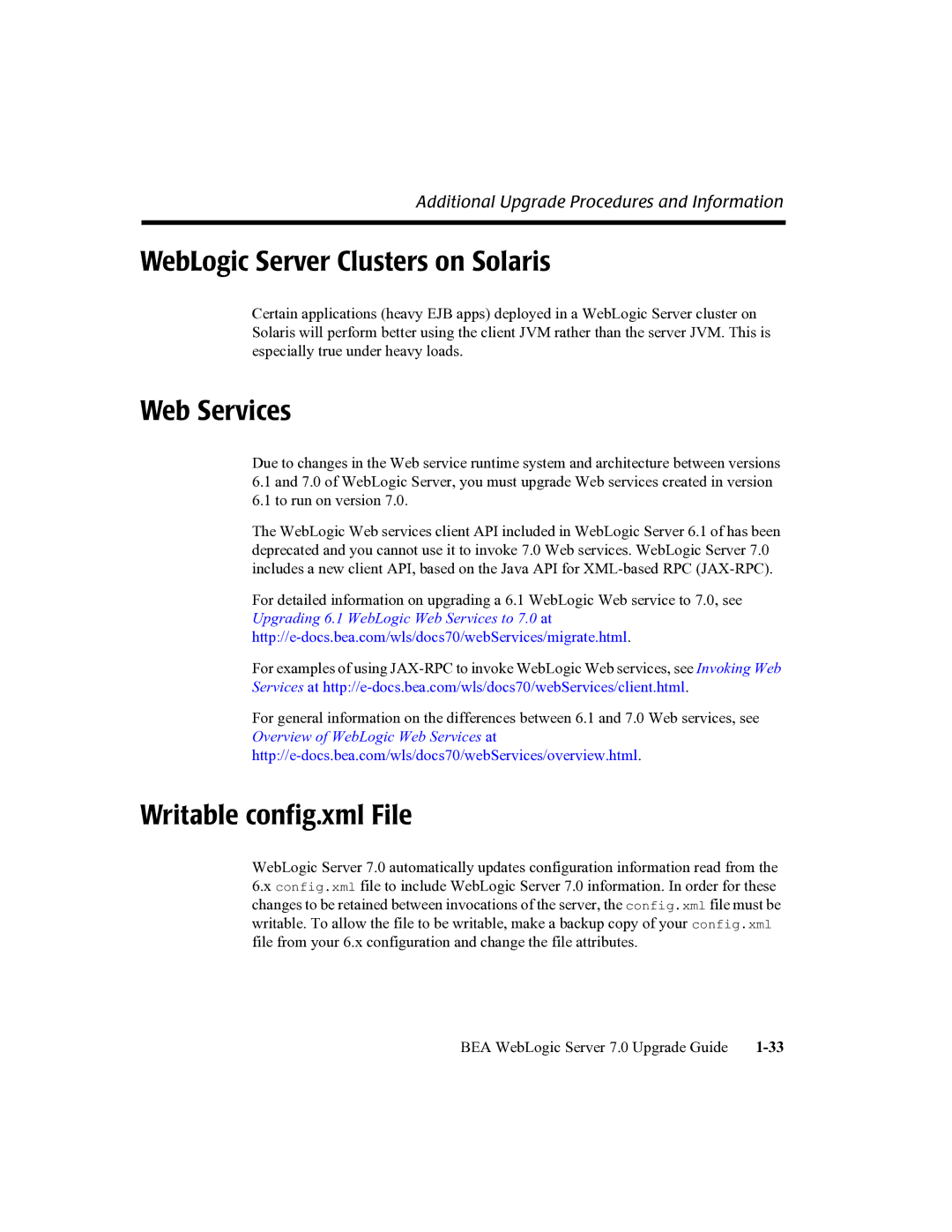7 specifications
BEA 7, a significant product from BEA Systems, represents a cornerstone in enterprise application integration and service-oriented architecture. As a comprehensive solution for developing, deploying, and maintaining enterprise-level applications, it brings a host of features that cater to the needs of businesses seeking agility and reliability in their IT infrastructure.One of the standout characteristics of BEA 7 is its robust support for service-oriented architecture (SOA). This enables businesses to create applications as loosely coupled services, facilitating easier integration and scalability. The platform's emphasis on middleware technologies allows organizations to streamline their IT operations, enhance interoperability, and reduce time to market for new applications.
BEA 7 includes a powerful application server that provides a reliable runtime environment for managing applications. Offering high availability and scalability, it can successfully handle the demands of high-volume transactions while ensuring optimal performance. The built-in clustering capability ensures that applications can remain operational even in the event of server failures, which is critical for mission-critical applications.
Another notable feature of BEA 7 is its capabilities for web services. With support for industry standards such as XML, SOAP, and WSDL, users can easily expose and consume services across diverse platforms. This allows businesses to take full advantage of an interconnected ecosystem and simplifies the process of integrating various applications and data sources.
Security is a paramount consideration in BEA 7, which includes strong authentication, authorization, and encryption mechanisms to protect sensitive data. The platform's comprehensive security features ensure compliance with regulatory requirements and protect against potential threats, which is particularly important for sectors handling sensitive information, such as finance and healthcare.
BEA 7 also embraces innovative technologies such as the Java EE platform, facilitating the development of cross-platform applications. The integrated development environment (IDE) offers numerous tools for developers, making it easier to design, debug, and deploy applications. Developers benefit from built-in support for commonly used frameworks and libraries, improving productivity and enabling rapid application development.
In summary, BEA 7 stands out as a powerful enterprise solution, distinguished by its support for SOA, robust application server capabilities, web services integration, strong security features, and a developer-friendly environment. These attributes make BEA 7 an essential tool for organizations aiming to enhance their operational efficiency and adapt to the increasingly dynamic business landscape.
